
What are the different types of loose-leaf tea available for purchase?
This article explains the different types of loos-leaf tea available for purchase and their health benefits.
In China, the tea culture is traced back to 2,000 BC. It is the most consumed beverage around the world besides water. In 1857, the Chinese term Wulong (Oolong) was first found to describe tea. The word ‘oo’ means black, and ‘long’ means dragon. It refers to the dark and curled nature of Oolong tea leaves.
In 1857, Oolong was identified as one of the tea categories along with white tea, green tea, yellow tea, black tea and Pu-erh tea. Further, in the 18th Century, Taiwan began to import tea and tea plants from China, including small Oolong trees. These trees thrived in Taiwan’s climate. Due to high demands from domestic and Asian countries, Taiwan has become one of the four best tea origins in the world.
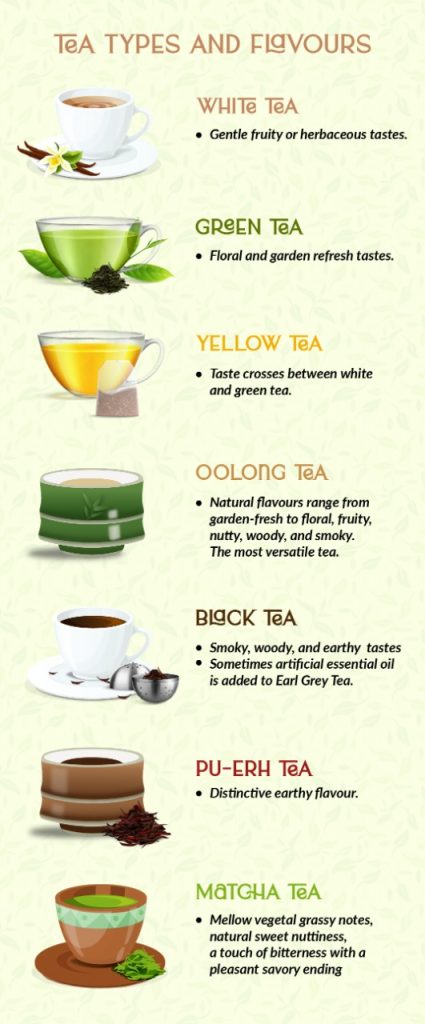
In this article, we will explain everything you need to know about Oolong tea.
1. What Is Oolong Tea?
2. Oolong Tea Origins
3. How Oolong Tea is Made?
4. How to Choose Oolong Tea?
5. How to Brew Oolong Tea And Loose Leaf Tea?
6. Nutrients And Benefits of Oolong Tea
7. Side Effects, Precautions, Risks And Considerations
Oolong tea is a semi-oxidized tea made from the Camellia sinensis plant. All tea types are made from only the Camellia sinensis plant. But based on the tea leaves picked, level of oxidation, or processing, they are categorised as white, green, Oolong, black etc.
Oolong tea lies between green and black tea, but it is neither green tea nor black tea. The processing of Oolong tea often includes more than 15 steps. It is the most versatile tea category, both in flavour and colour.
Oolong tea goes through a very complicated process, such as twice firing, bruising, and fermenting. As a result, Oolong tea can be sweet and fruity with honey aromas, woody and thick with roasted aromas, or green and fresh with complex aromas.
The origins of Oolong are claimed in both China and Taiwan, and tea is still highly revered in both countries today.
Among all its origins, Taiwanese Oolong Tea is famous for its premium high mountain Oolong Tea. As the weather in Taiwan is very variable with the tall, steep mountains with different temperatures, altitudes and soil, these factors resulted in differences in the appearance, aroma, and flavour of tea leaves.
It may not surprise you that tea is grown all across Taiwan. However, even within the different regions, there is notable variation in the tea produced. The high-mountain area runs down the geographical centre of Taiwan, spanning several counties.
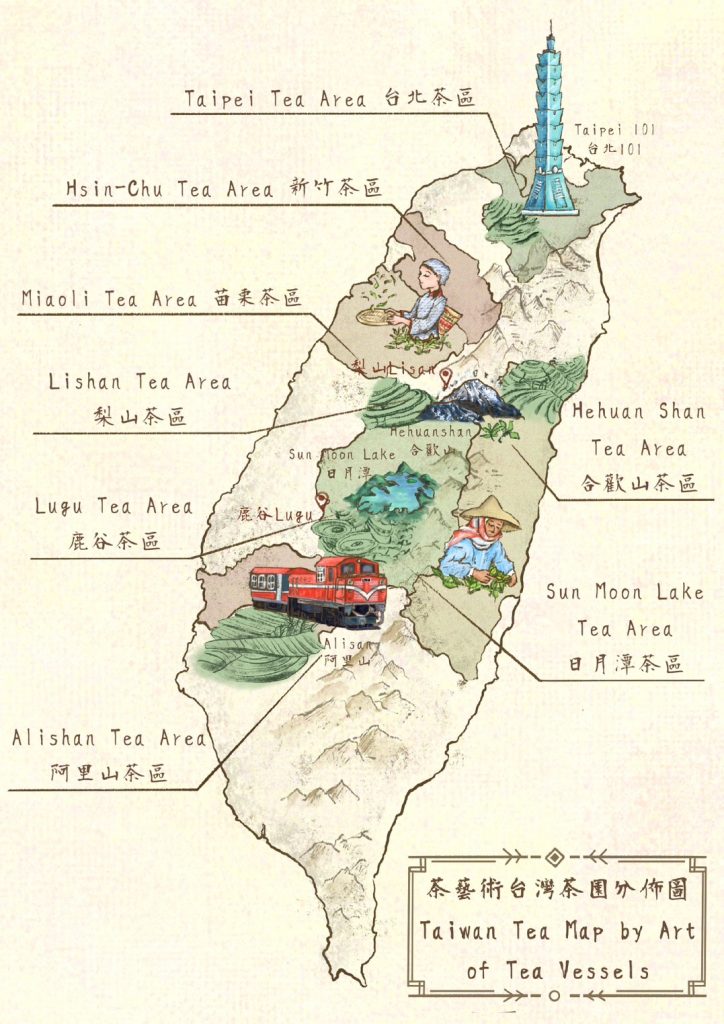

The Northern areas (T’ai Pei and I-Lan) are better known for their green teas, such as Wenshen Paochong, Tie-Guan-Yin and Shushan.
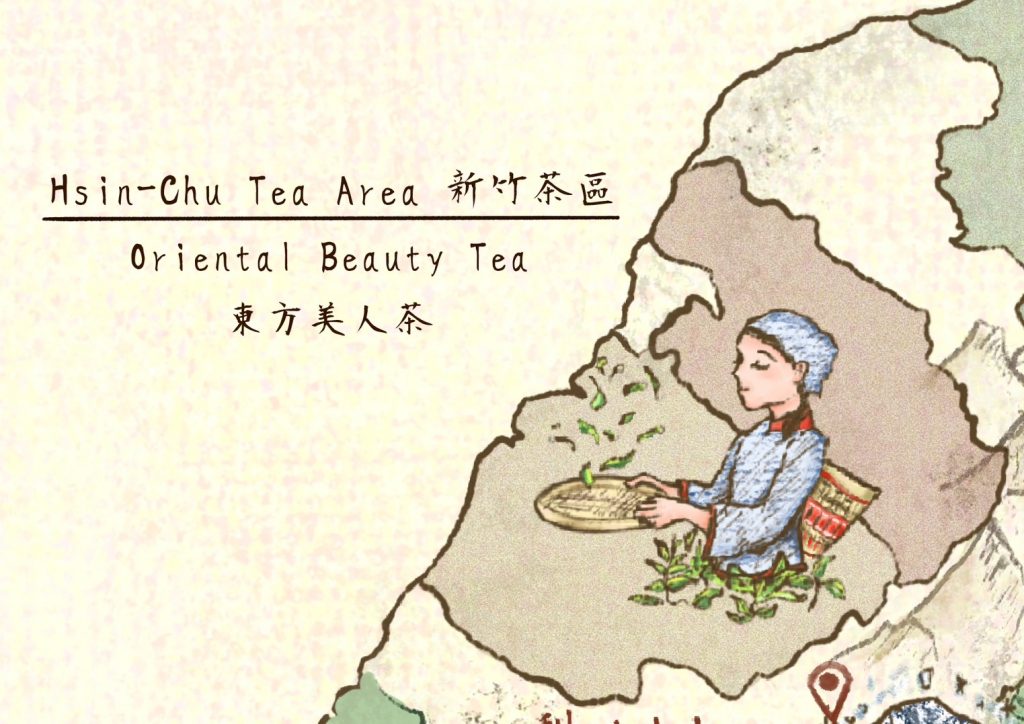
The North-East region (including Taoyuan, Hsinchu, and Miaoli counties) produces green tea and the famously unique Oriental Beauty.
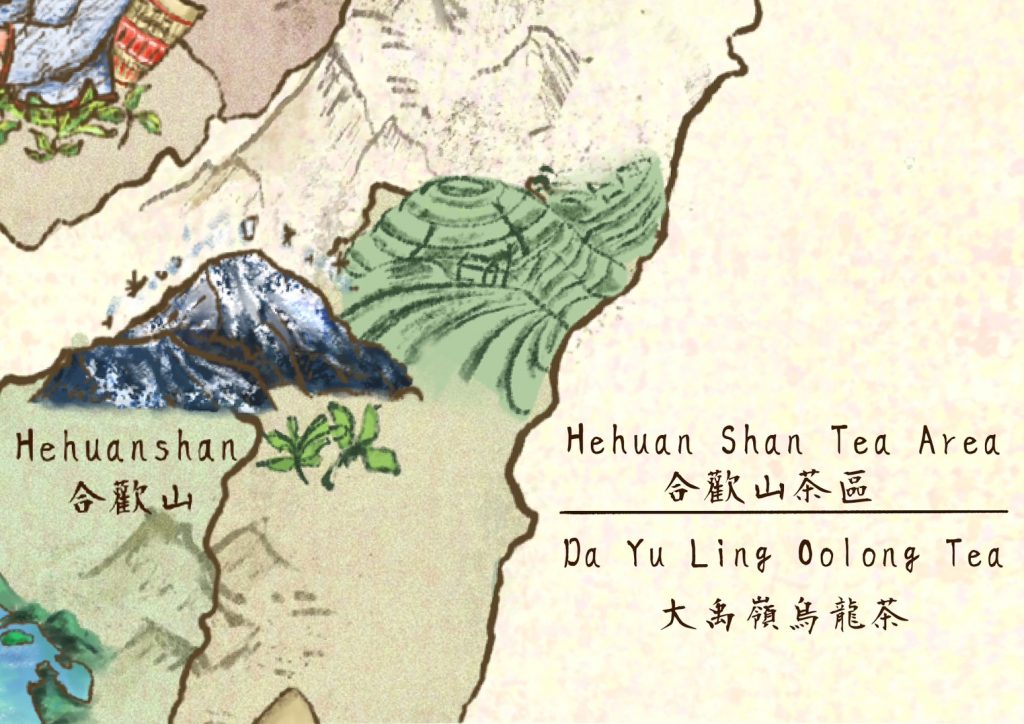
On the east side of Taiwan’s Central Mountain Range, Hehuan Shan Tea Area is one of the highest tea plantations in Taiwan and in the world. Specifically, Da Yu Ling Oolong Tea is one of the rarest teas grown in this tea area.
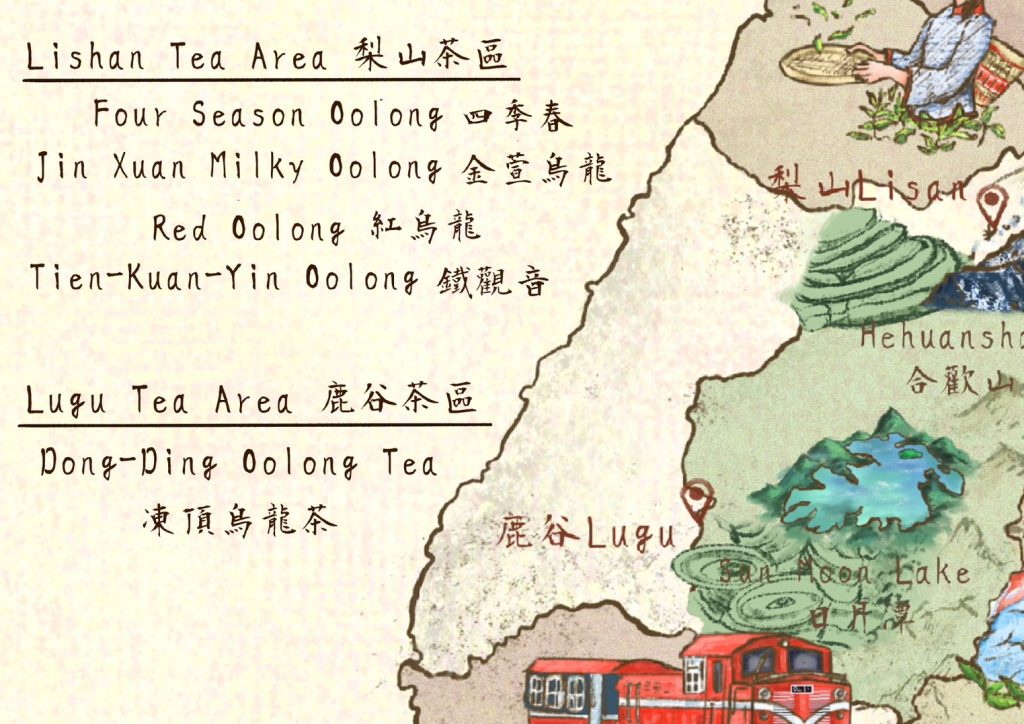
On the west side of Taiwan’s Central Mountain Range, most notably Lishan, Lugu, and Nantou tea areas, as well as the most famous tea area, Alishan Tea Area.
Lower amounts of oxygen in the air at these high altitudes mean that the tea plants grow more slowly. And the slower the growing process, the more minerals are absorbed, so the tea leaves become thicker and a lusher green. Each plantation and each mountain produce its bouquet of flavours and potent health properties.
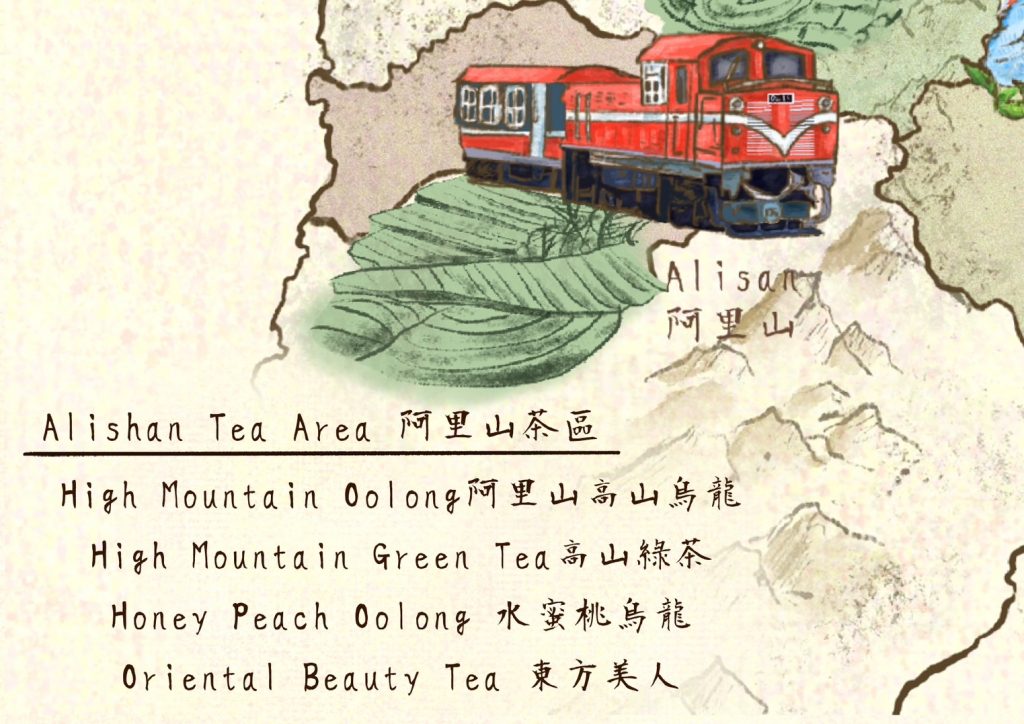
Some of the better-known oolong teas from China are: Da Hong Pao, Shui Jin Gui, Tieguanyin
Darjeeling oolong tea, Assam smoked oolong: Vietnamese oolong.
The reason why Oolong tea has a noticeable aroma and taste is its making process. Its processing involves many more steps than white, green, and black tea, as well as more varieties resulting from how tea leaves are processed. You find it hard to go back to green tea or black tea once you taste the middle and ending aroma of Oolong tea.
Here is the process of how Art of Tea Vessles’s Oolong Tea is made.
The top three to four leaves of new growth from a tea plant give the best raw material for making Oolong tea. So, the first step is to pick those leaves usually by hand in Taiwan. However, choosing the tea leaves is the best way to harvest the new growth. Machine harvesting of tea leaves is uncommon due to the accesibility of the machine in the high, steep mountains.
Once you pick the leaves, it is time for withering or sun drying. During this step, the leaves of tea spread out in indirect sunlight. It evaporates the water from the tea leaves while activating the enzymes and helps to build amino acids and polysaccharides. This enhances the sweetness of the tea and prepares the leaves for the next step of the process.
Once the water gets evaporated from the tea leaves, they are placed indoors for further withering and cooling. This is termed fermenting indoors. And this is when the bruising process starts.
When the desired oxidation level is reached, the enzymes are deactivated using heat. This process is called roasting or frying and is done by panning the tea leaves under 330℃ in a hot rotating drum. After the roasting process, the astringency of tea disappears, which makes the flavour, taste, and colour of tea beverage remain stable
Now, the tea leaves are twisted or rolled into a ball shape using rollers. It helps to break the leaf to develop a rich flavour.
Again the tea leaves are dried to eliminate any moisture left in them. During this step, the stems are also partly removed to eliminate the bitterness. After this, depending on the type of tea, roasting is done.
Note: The rolling and drying process is repeated for 10 to 12 hours.
When the final processing is done, the producers pack the tea for sale. Most Taiwanese tea producers pack their tea in bulk vacuum-sealed bags to sell wholesale to customers.

When it comes to buying an Oolong tea, there are a lot of options available to choose one. But, it needs proper knowledge to choose the best Oolong tea to get its benefits. Here’s a quick guide to selecting the Oolong tea for yourself and your family.
For buying Oolong tea, its fragrance or aroma is the thing you should consider. Among all tea categories, only Oolong Tea goes through the roasting process, which gives Oolong Tea multiple fragrances and aftertastes. When the roasting time is low or medium, the aroma and taste vary from sucrose sugar to molasses sugar and to brown sugar. When the roasting degrees reach above medium to high, the tea tastes citrus, nutty, savoury and smoky and woody.
For instance, the aroma of green tea will be similar to sucrose sugar, and the tea from high mountain Dong Ding, Da Yu Ling, gives a molasses sugar aroma. On the other hand, if you check the oriental beauty of Tie Guan yin, it smells like brown sugar. The scent of the red Oolong tea is similar to nutty and savoury, and red jade black tea gives smoky, woody flavours.

The colour of the tea beverage depends on the oxidisation degree. When the tea is oxidised between 0% and 50%, the liquid of the tea turns from pale green to mint green and lime green. And the tea aroma and taste change from garden fresh to flowery and down mellow fruit taste.
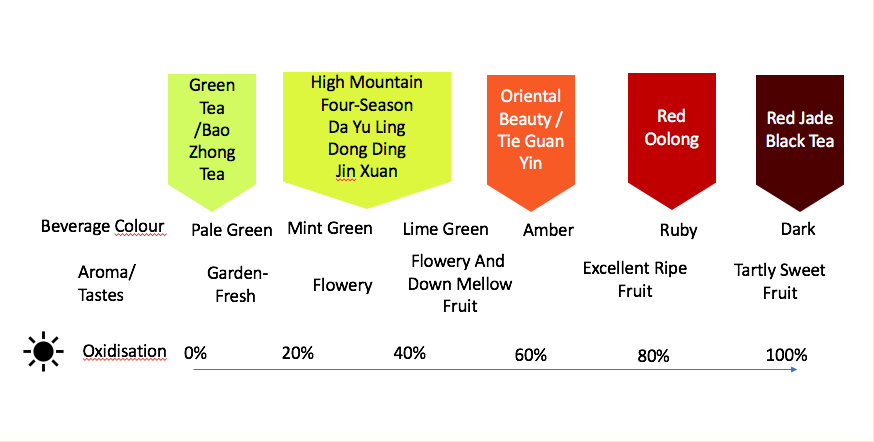
Caffeine Content
The caffeine content in Oolong tea depends on its type. However, a cup of Oolong tea has less caffeine than a cup of green or black tea. It depends on various techniques used by tea producers for roasting, ageing, drying, oxidation, and more. Red Oolong tea has low caffeine as compared to mint green tea. So, the dark the colour of the tea more is the more caffeine it is.
Due to the complex flavours of Oolong tea, it’s important to brew it right. It might be a bit tough to understand its brewing technique initially, but with the right strategies and little patience, you will soon become a master in brewing Oolong and loose-leaf tea.
Before starting, we recommend you use clay or a porcelain teapot for brewing Oolong tea. That’s because they can retain heat and keep the water hot for a long time. It is also porous, which means it can soak the flavours of the tea more nicely. We also recommend using boiling water to preheat the teapot. Pre-heating helps the brewed tea to maintain the proper temperature and keep the taste intact.
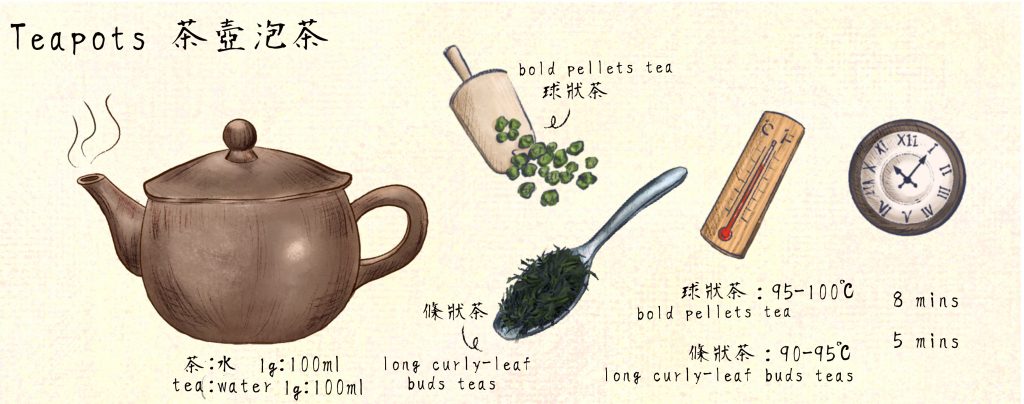
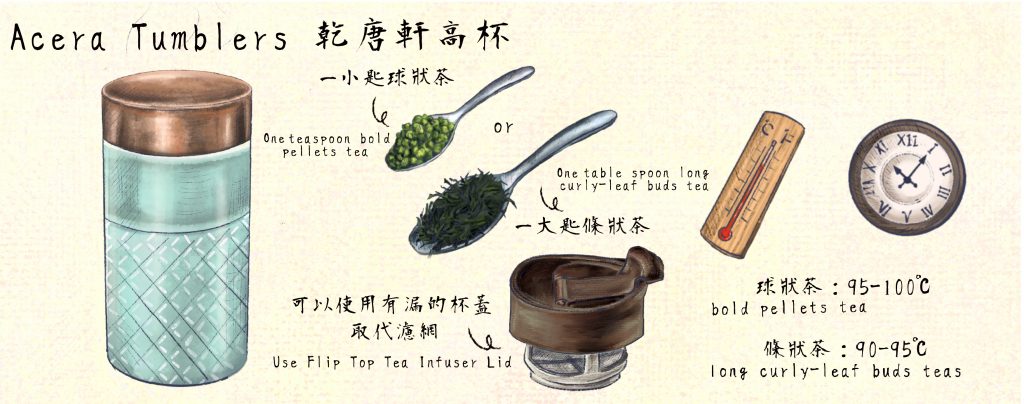
2. Loose-leaf oolong tea brewing guide by tumblers:
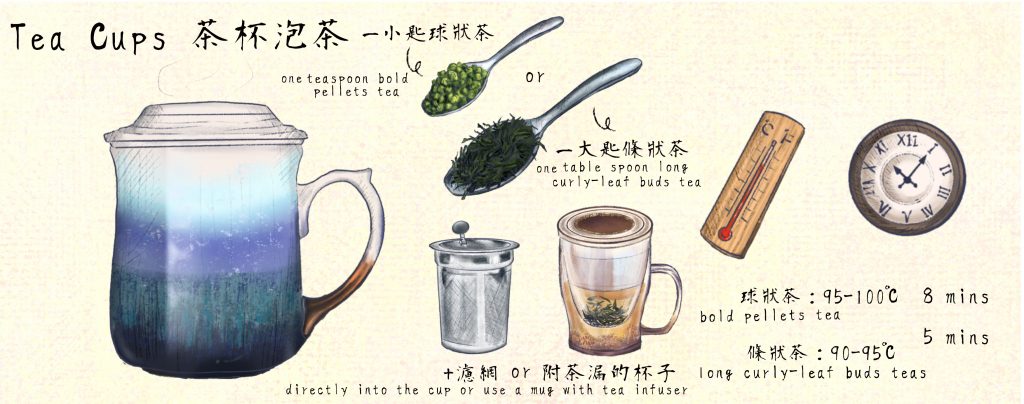
3. Loose-leaf oolong tea brewing guide by tea cups:
Just like this, you can also brew a cold Oolong tea for drinking. For cold Oolong tea, pour some lukewarm/cold water into the tea leaves. Cover the teapot lid and put it in the refrigerator for 6 hours. After 6 hours, it’s ready to serve. Cold Oolong tea is a refreshing alternative to hot versions, especially in summer. However, the brewing method is slower and might need more time to draw flavours from the tea leaves. So, you might have to start preparing it a bit early.
Note: It’s recommended to consume Cold Oolong tea within 24 hours of its preparation.
Like any other tea, Oolong tea has several vitamins, minerals, and antioxidants that are useful for providing good health benefits. Its richness in antioxidants helps protect the cells from free radicals that may cause various chronic ailments. Oolong tea’s nutrient-rich characteristics can offer the following benefits to the human body:
Besides these benefits, Oolong tea can help improve oral health and fight cancer cells. Also, Oolong is good for the skin. Nutrition-wise, it is rich in Potassium, Fluoride, Magnesium, Manganese, Sodium, Niacin, Polyphenols
Oolong tea is safe for healthy adults if it’s consumed within limits. The consumption limit for Oolong tea is 4 cups per day. It is recommended not to exceed this limit, as it might result in caffeine over-intake. You may experience headaches, nervousness, sleep problems or irregular heartbeat due to long caffeine overconsumption. Some people have complained of developing a dependency on Oolong tea through excessive drinking. They have also faced withdrawal symptoms after stopping their consumption.
For pregnant women, it is recommended to consult your healthcare professional first before consuming Oolong tea. In general, three cups a day of Oolong tea is possibly safe to drink. It is recommended not to exceed this limit, as its overconsumption is related to miscarriage, premature delivery, and an underweight child at birth.
If breastfeeding, keep your caffeine content (due to Oolong tea) as low as 1-2 two cups a day. That’s because caffeine can transfer into breast milk. Its overconsumption can affect your child and can cause irritability, sleep issues, and more bowel activity in them. It’s also advisable for postmenopausal women to drink Oolong tea cautiously.
In conclusion, Taiwan Oolong tea offers many benefits to people. Also, it is the most refined form of tea in the market. It is a product made from the Camellia sinensis plant through special processing. It is low in caffeine and has many different colours compared to black tea. Buy it from a trusted store to taste its rich flavour!
Now, enough of reading! Let’s enjoy our cuppa! Check this link to choose your tea!

This article explains the different types of loos-leaf tea available for purchase and their health benefits.
The Story About Oriental Beauty Tea Oriental Beauty Tea also
How to Use A Tumbler to Make Loose Leaf Tea?
Help And Customer Service Centre
WV6 8TN
Copyright ©2021 Chiwan Bridge International Allright reserved